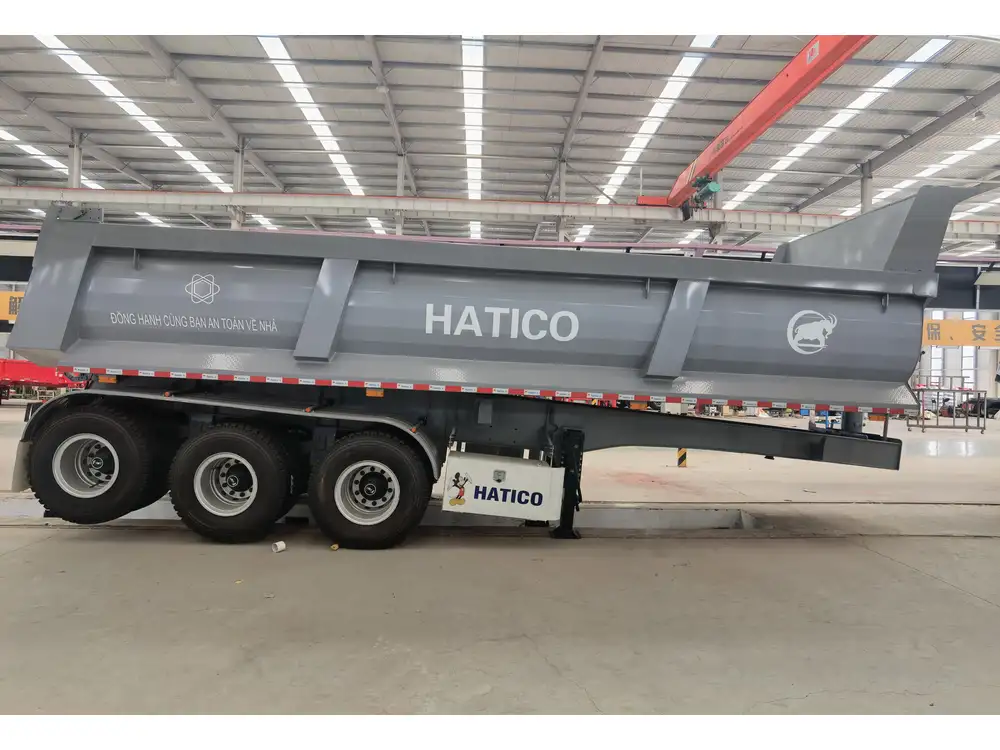Semi-trailers are an indispensable part of the transportation industry, playing a crucial role in moving goods efficiently across vast distances. Among the many components that make up these large vehicles, one particular feature often piques the curiosity of many: the little door on a semi-trailer. This article delves into its purpose, significance, various uses, and addresses common questions, providing a comprehensive understanding that can help truck owners, drivers, and logistics managers ensure optimal utility.
The Functionality of the Little Door
Access Point for Cargo Handling
The little door on a semi-trailer serves as an access point, facilitating various operational tasks beyond conventional loading and unloading. This door offers several advantages, including:
Unloading Small Goods: For small packages or equipment that do not require the full trailer to be opened, this door mitigates the hassle of unloading large volumes of products. It is particularly useful when transporting pallets or boxcars, allowing for a more efficient workflow.
Quick Access for Inspectors: During inspections, regulatory personnel can quickly access the trailer’s interior without needing to fully open the larger doors. This enhances inspection expediency and compliance adherence.

Emergency Exits and Safety Features
Another essential aspect of the little door is its design as a secondary exit. In the event of emergencies, the little door provides a swift escape route for drivers or workers, promoting safety during critical situations. Compliance with safety regulations often dictates the inclusion of such exits on semi-trailers, underscoring the industry’s commitment to worker safety.
| Feature | Purpose | Benefits |
|---|---|---|
| Access for Small Goods | Efficient unloading of small packages | Saves time, improves workflow |
| Emergency Exit | Safety feature for quick escape | Enhances worker safety |
| Inspection Access | Quick access for regulatory evaluations | Accelerates compliance checks |
Varieties of Little Doors: Types and Mechanisms
Types of Little Doors
The design and functionality of little doors can vary significantly depending on the type of semi-trailer. Below are common variations:
Roll-Up Doors: These are often seen in cargo trailers, retracting upwards to provide access without protruding outward, allowing for tight loading zones.
Hinged Doors: Common in flatbed trailers, these swing open outward and are typically used for larger items that require more space for loading.
Sliding Doors: Implemented mainly in enclosed trailers, sliding doors minimize the required space for access, making them ideal for urban environments.

Mechanisms of Operation
Different mechanisms enhance the functionality of the little door. Here’s how some of them work:
Manual Operation: Standard in smaller trailers, these doors are typically managed by a latch and hand-operated mechanism.
Electric Controlled: On high-end or multi-functional trailers, electric doors can be operated from the cab, which adds convenience for quick access.
Pneumatic Mechanism: Some advanced trailers utilize air or hydraulic pressure to open and close the doors, providing an effortless and quick operation for larger payloads.
Common Concerns Regarding the Little Door
How Does the Little Door Affect Weight Distribution?
The little door can play a significant role in weight distribution. Users must ensure that the cargo loaded through this door does not alter the overall balance of the trailer. An uneven distribution of weight can lead to handling difficulties, potential tire wear, or even increases in fuel consumption.

Maintenance of the Little Door: Best Practices
Keeping the little door functional and efficient requires consistent maintenance. Key practices include:
Regular Inspections: Periodically check for wear and tear, including seals and latch functionality.
Lubrication: Properly lubricate hinges, rollers, and seals to prevent rust and ensure smooth operation.
Cleaning: Regularly clean the door area to prevent dirt accumulation that may hinder functionality or cause corrosion.
Addressing Security Concerns
With cargo theft being a concern in the transportation industry, having a reliable locking mechanism on the little door is crucial. Apart from traditional locks, consider investing in advanced locking systems, such as electronic or keypad locks, which provide an additional layer of security for vulnerable cargo.
| Maintenance Task | Frequency | Benefits |
|---|---|---|
| Regular Inspections | Monthly | Identify potential issues early |
| Lubrication | Quarterly | Ensure smooth operation |
| Cleaning | As needed | Prevent corrosion and wear |
| Security Upgrades | Annually | Enhance cargo protection |
The Economic Impact of Using the Little Door

Increased Efficiency in Operations
Utilizing the little door effectively can dramatically enhance operational efficiency. It allows for:
Reduced Unloading Times: Small packages can be accessed quickly without having to open the entire trailer, reducing downtime at loading docks and transit points.
Enhanced Organization: By allowing access to cargo without disrupting the entire load, operations can maintain organization and streamline the shipping process.
Cost-Effectiveness for Businesses
The strategic use of little doors translates directly into cost savings. Businesses can minimize labor costs associated with unloading, improve delivery times, and enhance customer satisfaction—all of which contribute to a stronger bottom line.
Labor Efficiency: With quicker access to cargo, personnel can focus on other tasks, enhancing workforce productivity.
Decreased Turnaround Times: Faster loading and unloading lead to shortened delivery cycles, allowing for higher frequency of runs and increased revenue potential.
Conclusion: The Multifaceted Role of the Little Door
In summary, the little door on semi-trailers plays a pivotal role that extends beyond mere functionality. Its inclusion serves critical needs in efficiency, safety, and operational workflow, allowing trucking companies to maximize their capabilities. Understanding its purpose and maintaining it properly translates into cost savings, smoother operations, and enhanced safety for all personnel involved.
The diverse functionalities of the little door—from facilitating rapid cargo transfer to providing quick emergency exits—underscore its significance in the logistics and transportation industry. By engaging in proactive maintenance and adopting best practices, companies can harness the full potential of this feature, driving operational excellence and ensuring safety in every journey.
For those in the transportation sector, a comprehensive understanding and correct usage of the little door not only boosts operational efficiency but also instills confidence in every delivery made.



